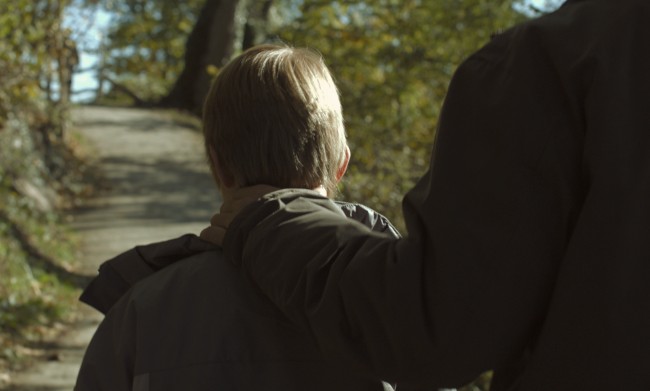
There was a disturbing trend at this years Cannes Film Festival, where many films focused on an issue that can easily send shivers up the spine. The issue at hand is pedophilia and several films dealt with the horror to varying degrees of success. From Julia Leigh‘s Sleeping Beauty to Maïwenn‘s Poliss, there was no hesitation in putting shocking images on the big screen. However, no film handled the matter quite like Michael, the debut feature film from German filmmaker Markus Schleinzer. In this haunting profile of the titular character, a middle aged German pedophile, played with nonchalant menace by Michael Fuit, is detailed in excess with the aim to truly unnerve. However, despite an inherent ability to shock with the subject matter alone, Michael has a persistent problem of feeling empty.
The film describes the final five months in the life of Michael and his 10-year-old prisoner, Wolfgang, played with serious determination by newcomer David Rauchenberger. The goal of Schleinzer is to profile the everyday life of a seemingly banal man who, beneath the surface, harbors one of the darkest secret imaginable in his basement. Though there is no graphic sex, there are several extremely uncomfortable moments that border the line of what is acceptable to be shown on film, and that will surely make distribution in the US near to impossible. As Michael continues his day-to-day routine and Wolfgang becomes increasingly numb to his dire situation, a certain amount of tension arises in each scene as the audience hopes that Wolfgang will either escape or take down his tormentor.
Schleinzer’s career up to to this point has been in the role of casting director, working on some of the biggest European art house films, including most recently Michael Haneke‘s The White Ribbon, where he cast all the children in the film, making for an unsettling fact. Clearly influenced by the aforementioned filmmaker, the newcomer director aims to shock us with the painful truth of an unfathomable horror that has become a mild epidemic in sections of Europe. While certain scenes have an inescapable quality of desperation, most of the film treads on thin ice and never ventures into the real psychology of what makes our disturbed main character tick. Despite all of Schleinzer’s attempts at painting a stirring arthouse horror film, Michael never seems to escape the shadow of an amateur filmmaker trying to shock purely out of disgust, and it ends up feeling like Haneke-light.


